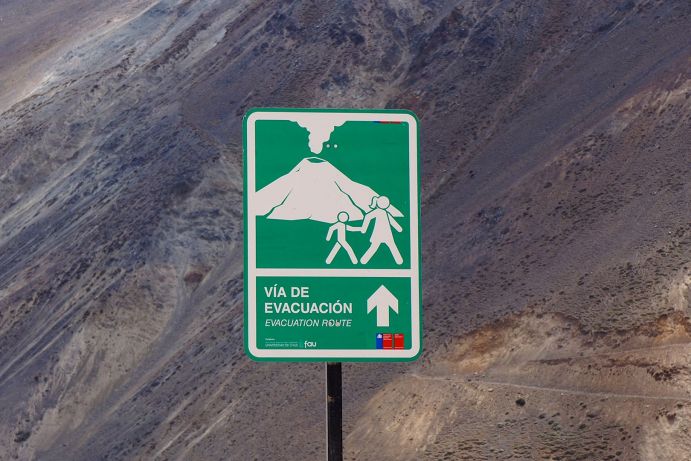Andes - Laboratory for Natural Hazards
Urban agglomerations are growing rapidly worldwide and new megalopolises are emerging. The dense settlement structures with sometimes millions of people are particularly vulnerable to natural hazards. In the RIESGOS project (Spanish: risks), the Earth Observation Centre (EOC) investigates natural hazards and their interactions in the Andean region.
The Andean region is at high risk of natural disasters and the effects of climate change. Earthquakes, tsunamis, landslides, volcanic eruptions, forest fires or floods occur in a relatively confined area. This allows the investigation of complex interactions. For example, heavy rainfall can cause a landslide that dams a river and leads to flooding.
It is a natural laboratory for natural hazards – the ideal place to develop scientific methods, to better understand possible escalation chains and thus to prevent future natural disasters. Through the cooperation with expert groups from Chile, Ecuador and Peru, RIESGOS will be guided by the needs of the potential users and the practical applicability.
In April, a delegation of eighteen German scientists and industry representatives travelled to the Andean region to strengthen scientific exchange and the dialogue with South American users. The delegation was received by a series of light earthquakes over several days, which demonstrated the relevance of the work in the pilot region. In dialogue with local partners, it became clear that the severe earthquake of 2010 in particular has led to a change in awareness in dealing with natural hazards. The earthquake and the resulting tsunami claimed 500 lives and caused economic damage in the double-digit billion range. In the years that followed, civil protection was improved and investments were made in research. Changes to which RIESGOS can build up today.
In two-day project workshops in Santiago de Chile, Lima and Quito focus was given to new multi-risk assessment approaches. Based on selected scenarios for floods, landslides, volcanic eruptions, earthquakes, tsunamis, possible interactions and cascading effects were discussed from the perspective of What would happen if...?. In the next step, the findings from the multi-risk scenarios shall be transferred to system components and web services. Using these web-based application services, decision makers and stakeholders shall create hazard analyses and simulate scenarios with complex risk chains in a multi-risk information system demonstrator.
After more than two weeks of intensive workshops and bilateral meetings, the RIESGOS team draws a positive conclusion. The response from the South American partners has been very good. It is aimed to jointly advance research activities and system developments and to design prototypical modules for future risk information systems.
As part of the project, the EOC is developing new algorithms in the field of artificial intelligence. In order to assess risks, potentially affected objects such as buildings and infrastructures must be characterized in detail. For this purpose, automated methods are used which extract the necessary information from satellite data and ground-based surveys and thus allow for area-wide mapping.
With RIEGOS, the EOC can further develop its expertise in generating remote sensing-based information products for natural disasters such as floods and volcanic eruptions. The methodological and technical work on the scenario-based system demonstrator complements and accompanies existing development lines in the institute.
RIESGOS is funded by the German Federal Ministry of Research and Education (BMBF) as part of the funding programme 'BMBF CLIENT II – International Partnerships for Sustainable Innovations' within the 'Research for Sustainable Development (FONA3)' platform. The Project Management Agency Jülich technically and administratively supervises the project on behalf of the German Federal Ministry of Education and Research.
The RIESGOS project consortium comprises the following academic research institutions and industrial partners: the German Aerospace Center (DLR), the German Research Centre for Geosciences (GFZ), the Alfred Wegener Institute (AWI), The Technical University of Munich, 52°North, geomer GmbH, EOMAP GmbH & Co. KG, plan + risk consult, DIALOGIK. The following associated partners support the project: GIZ, UNOOSA /UN-SPIDER, UNESCO and MunichRE. RIESGOS is already cooperating with more than 25 research partners and government agencies in the South American partner countries of Chile, Ecuador and Peru, and plans to expand this collaboration over the course of the project.




